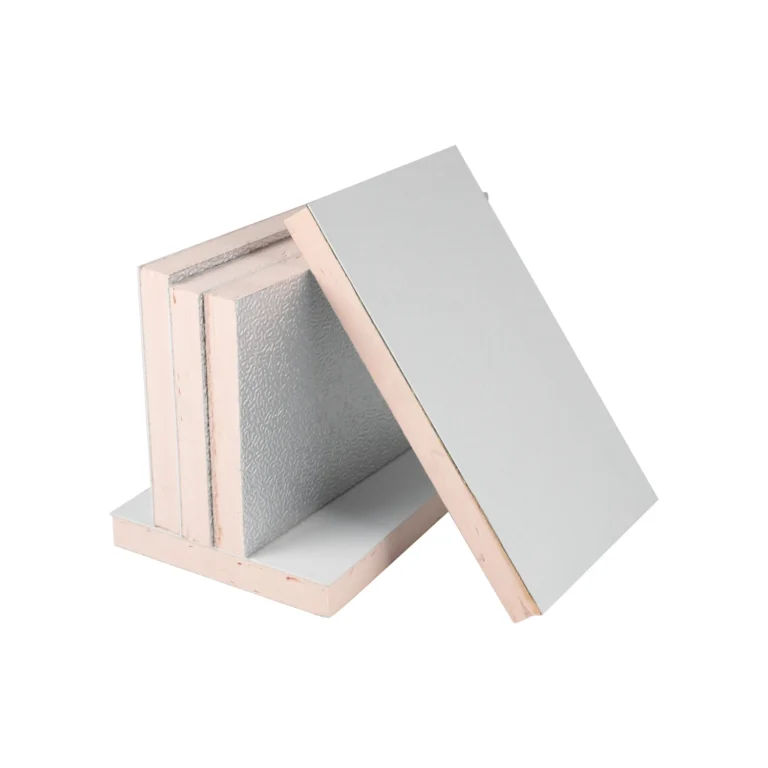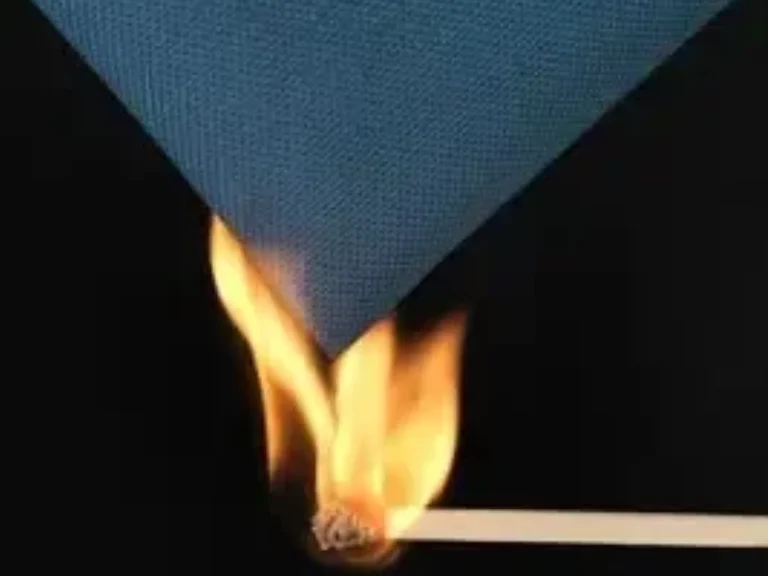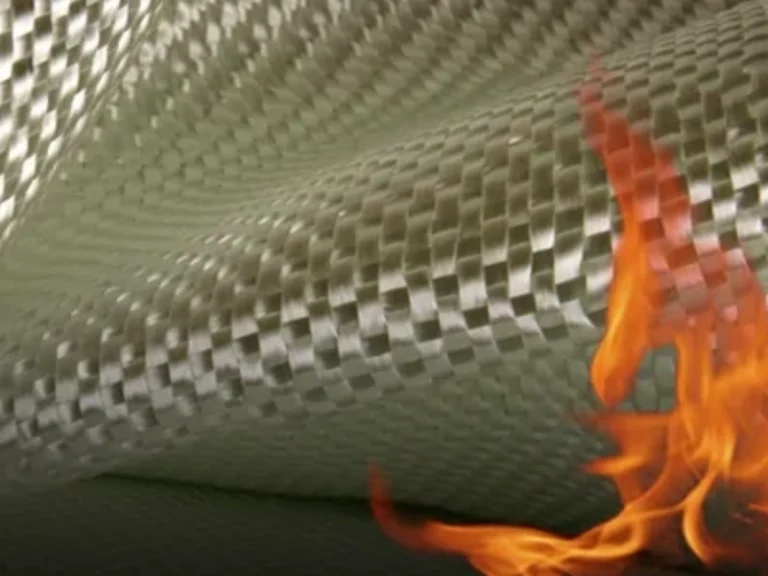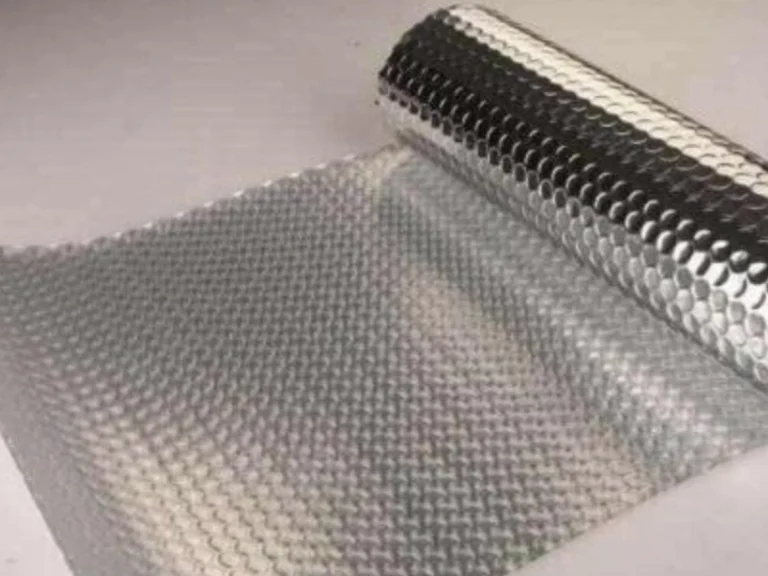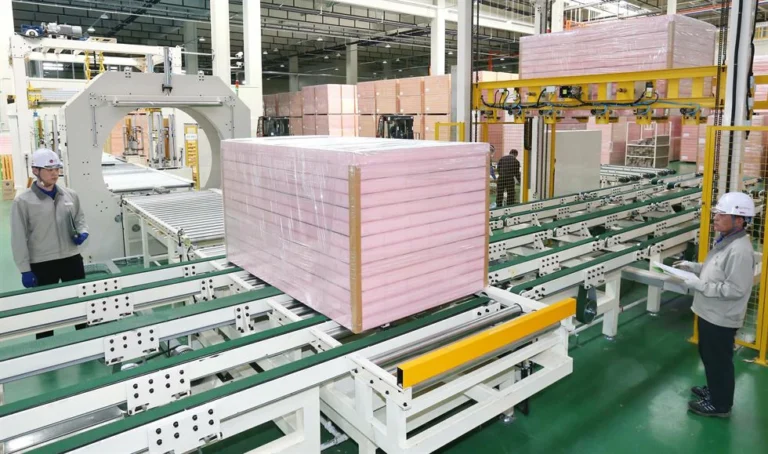In the ever-evolving landscape of temperature control, the use of heat reflective materials has emerged as a crucial solution. These remarkable materials, meticulously designed to reflect radiant heat and mitigate heat transfer, offer an array of advantages that extend far beyond conventional insulation methods. In this all-encompassing guide, we will embark on a journey into the realm of heat reflective materials, unraveling their significance, merits, and wide-ranging applications.
Understanding Heat Reflective Materials
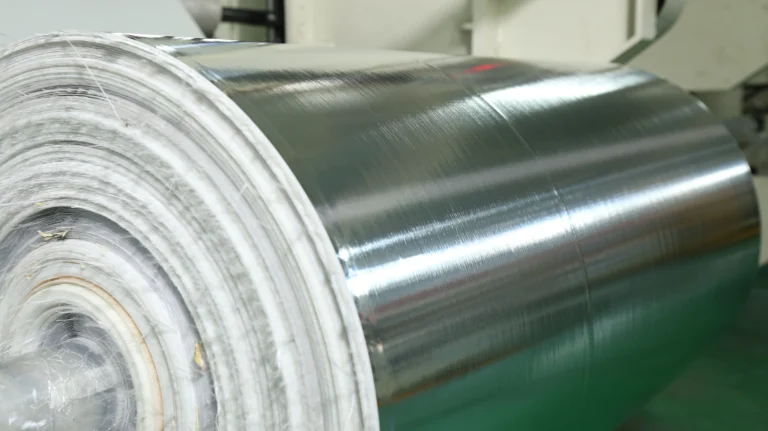
In the world of construction, insulation, and energy management, heat reflective materials have become indispensable tools. These materials, known for their ability to deflect and reduce the transfer of heat, play a pivotal role in maintaining comfortable living and working environments.
Definition of Heat Reflective Materials
The functionality of heat reflective materials is grounded in the principles of reflectivity and heat transfer. When exposed to radiant heat, such as sunlight or infrared radiation, these materials act as barriers, intercepting and reflecting a significant portion of the incoming heat. This process is akin to the way a mirror reflects visible light. In the case of heat reflective materials, they excel at reflecting heat energy while allowing minimal absorption.
High-quality heat reflective materials can achieve reflectivity values of up to 97%. This exceptional reflectance ensures that a substantial portion of radiant heat is deflected away, keeping the covered area cooler.
How Does Heat Reflective Material Work
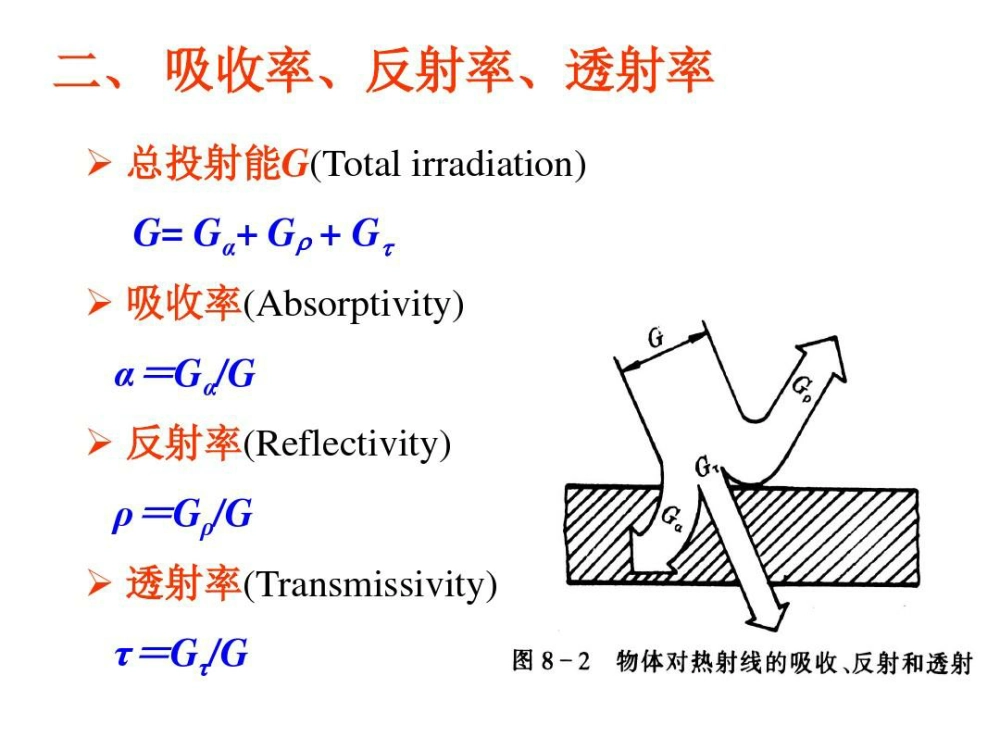
Heat reflective materials operate through a sequence of actions that obstruct the transmission of heat energy, specifically radiant heat. The procedure can be dissected into the subsequent stages:
1. Exposure to Radiant Energy:
Initially, the reflective material’s surface is exposed to radiant energy, which constitutes energy propagated in electromagnetic waves from a heat origin, such as the sun.
2. Interaction of Energy with Exceptionally Reflective Surface:
Upon exposure, radiant energy engages with the exceptionally reflective surface of the material. This surface typically comprises aluminum foil or a comparable metallic coating that is meticulously polished to optimize reflectivity.
3. Reflection of Radiant Heat:
The highly reflective surface deflects the majority of the radiant heat, diverting it away from the insulation material. This phase is pivotal as it averts the absorption of heat energy into the building or space under protection.
4. Establishment of Air Space:
To amplify the efficacy of reflection, an air space is upheld adjacent to the reflective surface. This air space acts as a thermal barrier and diminishes conductive heat transfer, which denotes the direct transmission of heat through a material.
5. Reduction of Heat Gain:
Consequent to reflection, the heat gained or lost through the material is notably curtailed. This is especially efficacious in diminishing heat gain from external sources in warm climates.
6. Diminution in Heat Transfer:
Through the reflection of radiant energy and the creation of a thermal break, the heat conveyed to the opposite side of the material is substantially reduced.
7. Supplementary Insulation:
Frequently, reflective materials form part of a composite system that may encompass other varieties of insulation. These supplementary layers can further withstand conductive and convective heat flows, augmenting the overall insulating characteristics.
8. Regulation of Internal Temperatures:
The ultimate stage in the process involves the stabilization of internal temperatures. The reflective insulation aids in maintaining indoor spaces cooler during summer by deflecting heat away and warmer in winter by reflecting heat inward, thereby alleviating the burden on heating and cooling systems.
Heat reflective materials function by reflecting radiant energy, utilizing highly reflective surfaces, and often integrating an air space to enhance thermal resistance. This mechanism effectively diminishes heat gain or loss within a space, thereby boosting energy efficiency and comfort.
Importance of Reflectivity in Heat Management
Reflectivity is the cornerstone of effective heat management, and its significance reverberates across a multitude of industries. Understanding the pivotal role of reflectivity in heat management involves examining real-world applications where heat reflective materials shine. Below, we delve into examples from various industries and provide corresponding technical parameters to underscore the importance of reflectivity.
1. Construction Industry
In the construction industry, heat reflective materials are instrumental in maintaining comfortable indoor temperatures and enhancing energy efficiency. For instance, when applied to roofs, these materials reflect a significant portion of the sun’s heat away from buildings, thereby reducing heat absorption.
High-quality heat reflective materials can achieve impressive reflectivity values, often exceeding 90%. For instance, aluminum foil-based materials can reach reflectance levels of up to 97%.
2. Automotive Sector
In the automotive sector, heat reflective materials find applications in car interiors, especially in regions with high temperatures. These materials act as effective heat shields, protecting vehicle occupants from the sweltering heat that can build up inside parked cars.
Heat reflective materials used in automotive applications often exhibit reflectivity values of around 85% to 90%, ensuring substantial heat rejection.
3. Aerospace and Aviation
Aerospace engineers leverage heat reflective materials to safeguard aircraft from the extreme temperatures encountered during flight. Reflective coatings applied to the aircraft’s exterior reflect a portion of the sun’s radiant heat, preventing overheating of critical components.
Reflective coatings on aircraft typically achieve reflectivity values ranging from 90% to 95%, ensuring effective heat rejection in the high-temperature environment of flight.
4. Energy-Efficient Architecture
In energy-efficient architecture, the use of heat reflective materials plays a vital role in creating sustainable structures. Windows coated with reflective films allow visible light to enter while reflecting away a significant portion of solar heat.
Reflective window films can achieve reflectivity values of up to 80%, allowing for ample natural light while minimizing heat gain.
5. Industrial Heat Management
Industries that rely on high-temperature processes, such as metallurgy and manufacturing, benefit from heat reflective materials. These materials help to control heat transfer and prevent excessive heating of machinery and equipment.
Heat reflective materials designed for industrial applications often exhibit reflectivity values exceeding 90%, ensuring efficient heat management in demanding environments.
By considering these real-world examples and corresponding technical parameters, it becomes evident that reflectivity is a crucial factor in effective heat management. Heat reflective materials, with their impressive reflectance capabilities, contribute significantly to energy efficiency, cost savings, and improved working and living environments across diverse industries. In the following sections, we will delve deeper into specific types of heat reflective materials and their applications, shedding light on how these materials can be harnessed to optimize heat management strategies.
Why Heat Reflective Materials Matter

In an era where energy efficiency is at the forefront of concerns, heat reflective materials take center stage in optimizing the thermal dynamics of structures and systems. These materials, characterized by their unique ability to minimize heat absorption, contribute significantly to maintaining comfortable indoor temperatures. This reduction in heat absorption not only enhances comfort but also substantially alleviates the burden on energy-hungry air conditioning systems. The result is a noteworthy reduction in energy consumption and associated costs, making them indispensable in both residential and commercial environments.
The technical parameters underpinning this effectiveness are striking. For instance, high-quality heat reflective materials can exhibit reflectivity values of up to 97%, indicating their ability to bounce back nearly all incident radiant heat. This exceptional reflectance translates into tangible benefits, such as reducing indoor temperatures by as much as 30 degrees Fahrenheit, drastically cutting down on the need for air conditioning, and consequently, reducing electricity bills.
The Benefits of Using Heat Reflective Materials

The advantages of integrating heat reflective materials into construction projects or daily living spaces are multifaceted. First and foremost, these materials are designed with the explicit purpose of reflecting heat, as opposed to absorbing it. This proactive approach keeps indoor spaces noticeably cooler during scorching summer months. This reduction in heat absorption not only enhances comfort but also dramatically reduces the strain on cooling systems, leading to quantifiable energy savings and a notable reduction in carbon emissions.
Another noteworthy advantage is the selective reflection of visible light while concurrently blocking harmful ultraviolet (UV) rays. This dual-functionality ensures that spaces remain well-lit without the associated heat gain. For instance, high-quality radiant barriers can reflect up to 95% of incoming radiant heat while allowing visible light to pass through with minimal attenuation.
Additionally, heat reflective materials play a pivotal role in maintaining the longevity of various structures and assets. For instance, in automotive applications, heat reflective materials, such as aluminum foil composites, act as effective heat shields, protecting the vehicle’s interior from extreme temperatures. These materials help preserve the aesthetics and functionality of the vehicle, extending its lifespan.
At WT, our unwavering commitment to engineering excellence drives us to provide the most advanced heat reflective materials on the market. As a professional manufacturer specializing in thermal reflective fabrics, we understand the critical role these materials play in enhancing energy efficiency and comfort.
Our product range encompasses a diverse selection of heat reflective materials, each engineered to meet specific needs. Our flagship high-temperature heat reflective materials boast impressive technical parameters, including high reflectivity values and exceptional durability. For example, our aluminum foil composite phenolic boards have demonstrated reflectivity levels of up to 97%, making them highly effective in reducing heat transfer in various applications.
In the following sections, we will delve deeper into the world of heat reflective materials, exploring their types, benefits, and applications. Through technical parameters and real-world examples, we aim to equip you with the knowledge needed to make informed decisions about incorporating these materials into your projects and daily life. Join us on this journey to harness the power of heat reflection and transform the way you manage temperature and energy.
The science behind this lies in their low emissivity (low-e) surfaces, which are engineered to minimize the amount of infrared heat radiation they emit. The lower the emissivity, the better the material is at being a radiant barrier. This property is crucial in materials that reflect heat, making them invaluable in a variety of applications, from industrial to everyday use.
In the world of construction, insulation, and energy management, heat reflective materials have become indispensable tools. These materials, known for their ability to deflect and reduce the transfer of heat, play a pivotal role in maintaining comfortable living and working environments. In this section, we will delve into the fundamental aspects of heat reflective materials, including their definition, working principles, and the critical importance of reflectivity in effective heat management.
What Are Some Reflective Materials That Keep Heat Out?
Usually, reflective materials are divided into two categories: flexible materials (heat reflective fabric) and plates.
Because of their high cladding ability, heat reflective fabrics are widely used as radiant heat reflective layers for irregular surfaces, such as heat insulation jackets, industrial protective clothing, etc.; heat reflective sheets are usually used for applications requiring high strength. Used in frame structures, such as duct panels, exterior wall insulation panels, etc.
Next, we will show you common heat reflective materials and their respective advantages and disadvantages from two parts: heat reflective fabrics and heat reflective sheets.
Heat Reflective Fabrics Overview
| Material Name | Characteristics | Performance Parameters | |
|---|---|---|---|
| 1 | Aluminized Fiberglass Fabric | Fiberglass base coated with aluminum. Flame-resistant and thermal-reflective. | Reflects up to 95% of radiant heat; resists up to 550°C continuously; emissivity of 0.03. |
| 2 | Silica Fabrics with Reflective Coatings | High-silica yarns with reflective coating. High melting temperature. | Withstands continuous temperatures of 1000°C; high tensile strength; thermal radiation reflectivity varies by coating. |
| 3 | Metalized Polyimide Films | Polyimide films with a metal layer, often aluminum. Chemical and heat resistant. | Reflectivity above 90%; temperature range from -269°C to +400°C; UV resistant. |
| 4 | Metal-Coated Polymer Fabrics (e.g., Mylar) | Polyester film with aluminum. Flexible and moisture-resistant. | Reflects about 97% of radiant heat; temperature range from -70°C to 150°C; low vapor transmission. |
| 5 | E-Glass or S-Glass with Reflective Coatings | Glass fibers coated with reflective materials. Strong and heat-resistant. | E-Glass withstands up to 600°C; S-Glass up to 1000°C; IR reflectivity enhanced by coating. |
| 6 | Gold-Coated Polyimide Films | Polyimide with gold coating. Exceptional reflectivity and corrosion resistance. | Nearly 99% IR reflectivity; wide operational temperature range; emissivity around 0.02 to 0.03. |
| 7 | Outlast® Adaptive Comfort® Materials | Contains PCMs for temperature regulation. Absorb and release heat. | Manages heat through phase change around 28°C to 32°C; not traditionally reflective. |
| 8 | Ceramic Coatings on Textiles | Textiles with ceramic compounds. Thermal protection and stability. | Extreme temperature resistance >1000°C; high IR reflectivity depends on ceramic type; low conductivity. |
Heat Reflective Sheet Overview
| Material Name | Characteristics | Performance Parameters | |
|---|---|---|---|
| 1 | Heat Reflective Phenolic Board | Consists of a phenolic foam core with aluminum foil facing on one or both sides. Lightweight and has good thermal insulation properties. Fire-resistant. | Thermal conductivity typically ranges from 0.02 to 0.04 W/(m·K). Fire-resistant with a high fire rating. |
| 2 | Heat Reflective MGO Board | Made from magnesium oxide (MGO), which is fireproof, molded with layers of aluminum foil. Known for its strength, durability, and resistance to mold and mildew. | Thermal conductivity is usually around 0.044 W/(m·K). Highly fire-resistant with excellent structural strength. |
| 3 | Reflective Insulation Foam Board | Foam insulation boards (such as polystyrene, polyurethane, or polyisocyanurate) laminated with aluminum foil. Offers high thermal resistance and reflects radiant heat. | Varies depending on foam type but generally has an R-value of around 5 to 10 per inch of thickness. |
| 4 | Aluminum Foil Laminated Fiberglass Board | Fiberglass insulation board with an aluminum foil laminate. Provides excellent thermal and acoustic insulation. Resistant to moisture and vapor. | Thermal conductivity is typically around 0.032 to 0.042 W/(m·K). Highly effective sound absorber. |
| 5 | Radiant Barrier Sheathing | Structural sheathing panels (like OSB or plywood) coated with aluminum foil to reflect radiant heat. Used in roofing and wall systems. | Reflects up to 97% of radiant heat; R-value addition is minimal but reduces attic temperatures significantly. |
| 6 | Double Reflective Insulation with Bubble Film | Consists of two external layers of aluminum foil reflecting heat, with one or two bubble film layers in between to reduce thermal conduction. | Reflects up to 94% of radiant heat; R-values can range from 1.1 to 6 depending on the bubble layers and air space used. |
| 7 | Aluminum Foil Laminated Mineral Wool Board | Mineral wool board faced with aluminum foil to increase heat reflection. Good thermal and sound insulation, and fire-resistant. | Thermal conductivity typically ranges from 0.035 to 0.040 W/(m·K); non-combustible with high melting point above 1000°C. |
| 8 | Aluminum Foil Laminated Ceramic Fiber Board | A high-temperature insulation board made from ceramic fibers and reinforced with aluminum foil facing. Excellent for high-temperature applications. | Low thermal conductivity around 0.09 to 0.16 W/(m·K); can withstand temperatures up to 1260°C. |
What Material Best Reflects Heat
To ascertain the optimal material for heat reflection, it’s essential to consider the specific industry application, material type, and performance requirements. However, to provide a clear perspective without seeming dismissive of these critical factors, we’ve compiled a list of top thermal radiation reflective materials based on their reflectivity. We encourage you to review this list in conjunction with a thorough assessment of your specific application environment.
1ST: Gold Coating
Emissivity: Approximately 0.02-0.03
Reflectivity: Up to 99% for near-infrared wavelengths
Thermal Conductivity: High, but the focus is on surface reflection, not conduction.
High-Temperature Durability: Outstanding; gold does not oxidize.
Drawback: Higher cost.
2ND: Aluminum Foil
Emissivity: 0.03-0.05
Reflectivity: Up to 97% for thermal radiation
Thermal Conductivity: Relatively high, although this is irrelevant for its reflective capabilities.
High-Temperature Durability: Good at moderate temperatures; however, oxidation at elevated temperatures can impair reflectivity.
3RD: Silver Coating
Emissivity: Approximately 0.02
Reflectivity: 95-99% across the visible and infrared spectrum
Thermal Conductivity: High, yet not a concern for reflection purposes.
High-Temperature Durability: Susceptible to tarnishing, which may diminish reflectivity if not properly protected against oxidation.
For most practical applications, aluminum foil composites are frequently chosen for heat reflection. This is due to their affordability, low emissivity, high reflectivity, and ease of application.
Choose the Right Heat Reflective Material for Your Project
Selecting the appropriate heat reflective material for your project is a critical decision that can significantly impact energy efficiency, comfort, and cost savings. To make an informed choice, it’s essential to consider various factors, explore case studies, and understand the science behind radiant barriers. In this section, we will delve into these aspects to guide you in choosing the right heat reflective material.

Factors to Consider When Selecting a Heat Reflective Material
1. Application: Determine the specific application of the heat reflective material. Are you insulating a residential attic, protecting industrial machinery, or enhancing energy efficiency in a commercial building?
2. Reflectivity: Assess the level of reflectivity required. Different materials offer varying degrees of reflectivity, often exceeding 90%. Consider the environment and heat source you’re dealing with.
3. Temperature Resistance: Evaluate the temperature range of your project. High-temperature environments may require materials with exceptional temperature resistance.
4. Durability: Consider the longevity of the material, especially in outdoor or industrial settings. Some materials may require additional protective measures.
5. Installation: Think about the ease of installation. Some materials are more user-friendly and require less specialized installation.
Case Studies Illustrating the Appropriate Use of Each Material

1. Radiant Barrier Foil Insulation: Ideal for residential attics, radiant barrier foil insulation reflects radiant heat, keeping attics cooler in the summer and warmer in the winter. Case studies have shown significant energy savings in homes with properly installed radiant barriers, reducing the strain on air conditioning and heating systems.
2. Reflective Roofing Membranes: In commercial buildings, reflective roofing membranes have been instrumental in reducing cooling costs. A case study involving a retail store demonstrated a substantial decrease in energy consumption and improved indoor comfort after the installation of a reflective roofing membrane.
3. Aluminum Foil Composite Phenolic Board: Industries with high-temperature processes, such as manufacturing and aerospace, benefit from the use of aluminum foil composite phenolic boards. These boards act as effective heat shields, preventing damage to machinery and ensuring operational safety.
How Effective Radiant Barriers Are in Various Settings
Radiant barriers, such as reflective foil insulation, are highly effective in reducing radiant heat transfer. In residential settings, they are particularly beneficial in attics. When installed correctly, radiant barriers can reflect up to 97% of radiant heat, resulting in cooler attics during hot summers and warmer attics in cold winters. This directly translates to lower energy bills and improved home comfort.
In commercial and industrial applications, reflective roofing membranes and aluminum foil composite phenolic boards contribute to substantial energy savings by reducing heat absorption and transfer. The impact is most noticeable in warm climates, where air conditioning costs are a significant concern.
The science behind radiant barriers revolves around the fundamental principle of reflectivity. These materials are designed to reflect radiant heat, which comprises a significant portion of heat transfer in various environments. By reflecting this heat, radiant barriers reduce the need for additional cooling or heating, resulting in improved energy efficiency.
Reflective materials, such as aluminum foil and specialized coatings, are key to achieving high reflectivity. Technical parameters, including reflectivity values, thermal resistance, and temperature tolerances, play a crucial role in determining the effectiveness of radiant barriers.
In Home Insulation and Energy Efficiency
Reflective fabric finds a more down-to-earth application in home insulation. Incorporating materials like aluminum foil in building insulation contributes significantly to energy savings. These materials reflect heat, helping maintain a comfortable indoor temperature while reducing the reliance on heating and cooling systems. This not only makes homes more energy-efficient but also contributes to overall environmental sustainability.
Each of these applications highlights the versatility and necessity of heat reflective fabrics. Whether it’s safeguarding firefighters, insulating spacecraft, or making our homes more energy efficient, heat reflective fabrics are silently and effectively making our world a safer and more sustainable place.
The significance of heat reflective materials cannot be overstated. They serve as essential components in a wide range of industries, from construction to manufacturing, transportation to aerospace. In residential and commercial settings, they contribute to reduced energy consumption and increased comfort. In industrial environments, they safeguard equipment and ensure operational safety.
These materials play a pivotal role in reducing the reliance on energy-intensive cooling and heating systems, making them indispensable for achieving sustainability goals and mitigating the impact of climate change. As industries seek more efficient and eco-friendly solutions, heat reflective materials emerge as key players in the journey toward a greener and more cost-effective future.
